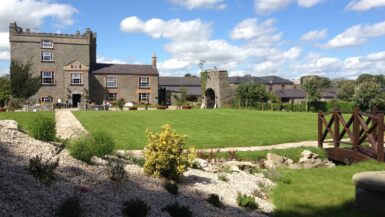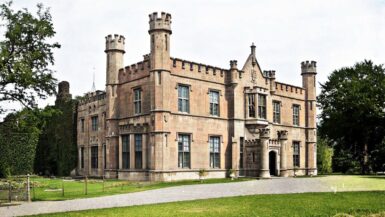Nestled in the picturesque countryside of County Tipperary, Ireland, Killaghy Castle stands as a testament to the rich history and the cultural heritage of this enchanting region. In this comprehensive article, we delve into the fascinating history of Killaghy Castle, exploring its various transformations, its influential residents, and the events that shaped its story. Discover the captivating past of this historical gem, an essential stop on any tour of Ireland’s ancient castles.
Early History: The Norman Influence
The Arrival of the Normans
The history of Killaghy Castle can be traced back to the late 12th century, with the arrival of the Normans in Ireland. In 1169, a group of Norman knights, led by Richard de Clare, also known as Strongbow, invaded Ireland to assist the exiled Irish King, Dermot MacMurrough. This marked the beginning of a period of significant Norman influence on Irish culture, politics, and architecture.
Killaghy Castle’s Foundation
Killaghy Castle was built around 1200 by the powerful Purcell family, who were of Norman origin. The castle was strategically located in the heart of County Tipperary, close to the River Suir, which served as a natural defense and a vital transport route. This location allowed the Purcells to establish and maintain their control over the surrounding lands.
Architectural Transformations
The Original Fortress
The original Killaghy Castle was a typical Norman fortress, featuring a wooden motte-and-bailey structure. The motte, a raised earthwork, supported the primary tower, while the bailey, an enclosed courtyard, housed the living quarters and ancillary buildings. A wooden palisade encircled the entire complex, offering additional protection against potential invaders.
The Stone Keep
In the late 13th century, the Purcells decided to replace the wooden fortress with a more durable stone keep. This four-story rectangular tower served as both a defensive structure and a symbol of the family’s wealth and prestige. The keep featured a central hall, private living quarters, and storage facilities, as well as a rooftop battlement for added defense.
The Elizabethan Mansion
During the 16th century, the castle underwent another significant transformation when the Purcells converted the original stone keep into an Elizabethan mansion. This adaptation reflected the changing architectural tastes of the time, as well as the Purcells’ desire to showcase their social status. The mansion featured spacious reception rooms, ornate plasterwork, and elaborate chimneypieces, indicative of the family’s wealth and refinement.
Influential Residents
The Purcell Family
The Purcell family played a prominent role in the local politics of County Tipperary throughout the centuries. As the castle’s original founders, they held significant power and influence in the area. The Purcells were involved in numerous conflicts and alliances with neighboring Gaelic and Anglo-Norman families, reflecting the turbulent history of medieval Ireland.
William Burke
In 1653, following the Cromwellian conquest of Ireland, Killaghy Castle was confiscated from the Purcells by the English authorities. The castle was subsequently granted to William Burke, a captain in Cromwell’s army. Burke carried out extensive renovations on the castle, adding Georgian-style elements to the existing Elizabethan mansion.
The St. John Family
In the early 18th century, Killaghy Castle passed into the hands of the St. John family through marriage. The St. Johns were an influential Anglo-Irish family who held the title of Viscount Bolingbroke. Under their ownership, the castle underwent further modifications, reflecting the family’s distinguished position in society.
Historical Events and Conflicts
The Irish Confederate Wars
During the Irish Confederate Wars (1641-1653), Killaghy Castle played a role in the broader struggle between the Irish Catholic Confederation and the English Parliamentarians. The Purcell family, being Catholic, supported the Confederation. However, following the defeat of the Confederates and the subsequent Cromwellian invasion, the Purcells lost their lands and Killaghy Castle was confiscated.
The Williamite War
In the late 17th century, Killaghy Castle was once again at the center of conflict during the Williamite War (1688-1691). This time, the castle served as a strategic stronghold for the Protestant King William III, who ultimately emerged victorious against the Catholic King James II. The St. John family, who were Protestant, maintained their ownership of Killaghy Castle following the war.
Restoration and Preservation
19th Century Renovations
In the 19th century, Killaghy Castle underwent further renovations under the St. John family’s stewardship. These modifications sought to restore some of the castle’s original medieval features, including the stone keep and the battlements. This period also saw the addition of a Gothic Revival-style entrance gate and the construction of a picturesque walled garden.
20th Century Conservation
During the 20th century, Killaghy Castle changed hands several times and ultimately fell into a state of disrepair. However, in the late 20th century, a dedicated group of local historians and conservationists took on the task of restoring the castle to its former glory. Their painstaking work has helped to preserve this important piece of County Tipperary’s history for future generations.
Killaghy Castle Today
A Living History
Killaghy Castle stands today as a fascinating testament to the rich and varied history of County Tipperary, Ireland. The castle’s many architectural transformations, from Norman fortress to Elizabethan mansion and Georgian estate, offer a unique insight into the changing tastes and priorities of its various occupants throughout the centuries.
A Must-Visit Attraction
Killaghy Castle is a must-visit attraction for anyone interested in Irish history or architecture. Guided tours of the castle offer a fascinating glimpse into the lives of its influential residents, as well as the broader historical context of medieval and early modern Ireland. Additionally, the castle’s picturesque setting, complete with its enchanting walled garden, makes it an ideal location for a leisurely day out.
Conclusion
Killaghy Castle, Co. Tipperary, Ireland, stands as a captivating reminder of the rich tapestry of Ireland’s past. From its early beginnings as a Norman fortress to its various transformations and illustrious residents, the castle offers a unique and engaging historical experience. As you explore its storied halls and take in its breathtaking surroundings, you’ll be transported back through time, discovering the intriguing history that shaped this remarkable County Tipperary gem.





Leave a reply